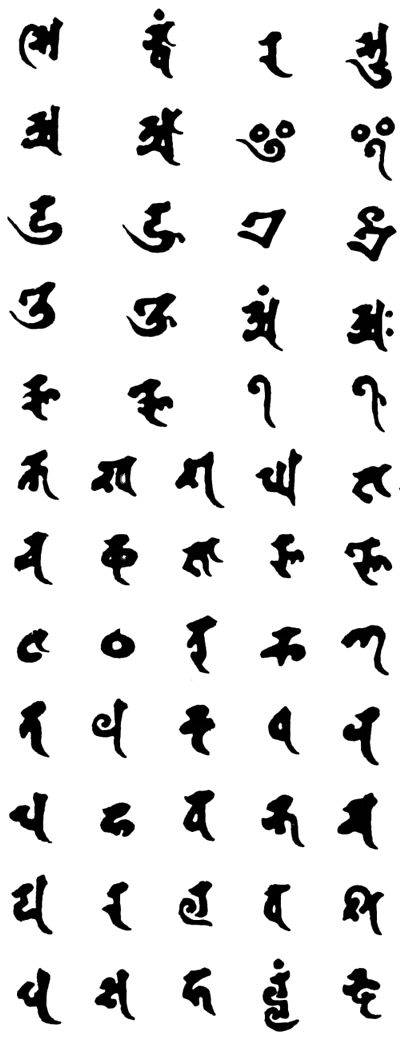
This calligraphy of the alphabet is by Kūkai. It begins with the words "siddhaṃ rastu" - Sanskrit for may there be perfection! In Gupta era India (ca. 3rd to 6th centuries CE) this was traditionally written at the head of every text, and the script associated with the Gupta's became known as Siddhaṃ as a result.
The syllables as written are:
si ddhāṃ ra stu
a ā i ī
u ū e ai
o au aṃ aḥ
ṛ ṝ ḷ ḹ
ka kha ga gha ṅa
ca cha ja jha ña
ṭa ṭha ḍa ḍha ṇa
ta tha da dha na
pa pha ba bha ma
ya ra la va śa
ṣa sa ha llaṃ kṣa
Notes
The brush style u and ū are a bit different to the modern pen style, as is the character for la.
Kūkai has used an alternative form of the tha syllable.
Kūkai has made a good distinction between ba and va. These two characters are frequently mixed up as they are so similar, especially in brush style calligraphy, but they need not be!
Kūkai has included all of the vowels ( ṝ ḷ ḹ ) which are often left out bcause they so seldom occur in mantras; and an extra conjunct consonant (llaṃ).
* This image of Kūkai's calligraphy is from the Ashara-jō, a collection published in 1837 by the Japanese monk Sō-gen. Sō-gen traced fine examples of Siddhaṃ calligraphy and then inked in the middle, thereby creating reasonably accurate facsimilies. The original of this calligraphy was 90cm high. The Ashara-jō has been reproduced as Raghu Vira and Lokesh Chandra (eds.) Sanskrit bījas and mantras in Japan (New Delhi : International Academy of Indian Culture, 1965); and in R.H. Van Gulik. Siddham : An Essay on the History of Sanskrit Studies in China and Japan (New Delhi, Jayyed Press, 1981), p.183.
